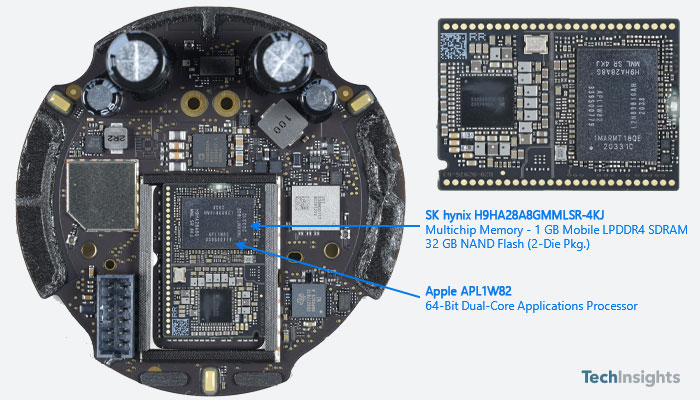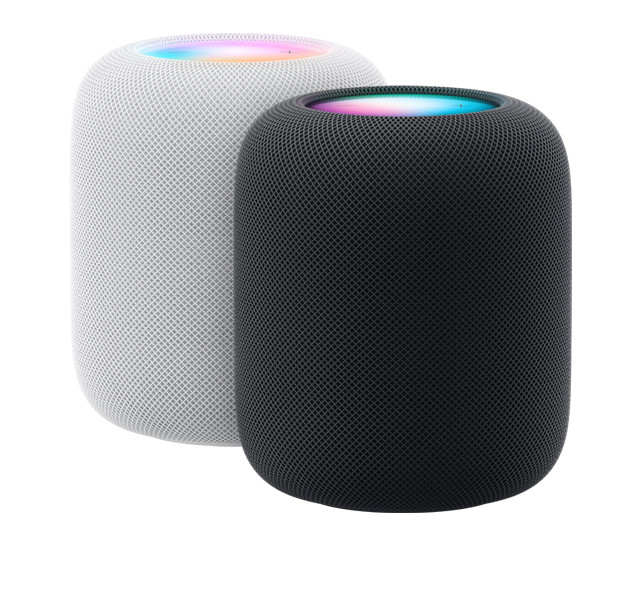The Future of Smart Audio is Getting Smarter: A Deep Dive into the Next HomePod mini
In the ever-evolving landscape of smart home technology, the HomePod mini has carved out a significant niche. Since its debut, it has served as an accessible entry point into Apple’s ecosystem, blending impressive computational audio with the intelligence of Siri and the robustness of a HomeKit hub. It successfully captured the market in a way its larger, more expensive predecessor did not. Now, the tech community is buzzing with anticipation for its next evolution. Persistent reports and industry analysis point toward an impending refresh, centered not on a radical redesign, but on a crucial internal upgrade: a new, more powerful Apple-designed chip. This isn’t just a minor spec bump; a next-generation processor inside Apple’s smallest smart speaker could unlock a new tier of performance, intelligence, and integration, fundamentally reshaping its role from a simple speaker to the true ambient computing heart of the modern Apple-powered home. This article explores the profound implications of this rumored upgrade, examining how a new chip could enhance everything from audio quality and Siri responsiveness to its synergy with the entire suite of Apple products, from the latest iPhone news to the groundbreaking developments in Apple Vision Pro news.
The Next Generation of Smart Audio: What to Expect
To understand the future, we must first appreciate the present. The current HomePod mini is a marvel of engineering, packing a surprising audio punch into a compact sphere. However, its capabilities are ultimately defined by the Apple S5 chip at its core—the same processor that powered the Apple Watch Series 5. While capable, the S5 has its limits, and a next-generation model is poised to push beyond them.
The Current Landscape: Strengths and Limitations
The HomePod mini’s success is built on three pillars: audio quality, Siri integration, and its role as a smart home hub. Its computational audio algorithms work in real-time to deliver a rich, 360-degree sound experience that belies its size. It acts as a Thread Border Router, a key technology for the new Matter smart home standard, and a reliable hub for HomeKit automations. Yet, users have noted areas for improvement. Siri, while functional, can sometimes exhibit latency, as many requests are processed in the cloud. Complex smart home commands can occasionally lag, and as the number of connected devices grows, the processing demands on the S5 chip increase. The latest iOS updates news has consistently pushed more intelligence to the edge, and the HomePod mini’s hardware is the next logical frontier for this evolution.
Rumored Upgrades: More Than a Simple Spec Bump
A new HomePod mini would almost certainly feature a more advanced System-in-Package (SiP), potentially a variant of the S7 or S8 chips found in recent Apple Watches, or an entirely new custom chip. This upgrade would bring several key benefits. First, a significant boost in processing power and a more advanced Neural Engine would enable more on-device processing. This is a cornerstone of recent Siri news and Apple’s overarching privacy-first philosophy, which is a constant theme in Apple privacy news. Faster, more reliable Siri responses that don’t always need to query a server would be a game-changing improvement. Second, an updated chip could incorporate an enhanced Ultra Wideband (UWB) chip, improving the precision and speed of features like Handoff for music and enabling more advanced proximity-based interactions, similar to the technology highlighted in recent AirTag news. Finally, we can expect support for newer connectivity standards like Wi-Fi 6E, providing lower latency and less interference in crowded wireless environments—a crucial upgrade for a device that is always connected.
Under the Hood: The Technical Significance of a New Chip
The true impact of a refreshed HomePod mini lies in the technical capabilities a new processor would unlock. It’s about enabling more complex software and future-proofing the device for the next wave of innovation across the Apple ecosystem, from personal audio to spatial computing.

Computational Audio Perfected
Apple’s leadership in computational audio is evident across its product line, with the latest AirPods Pro news and AirPods Max news showcasing the power of the H2 chip. A more powerful processor in the HomePod mini could bring its audio capabilities closer to its premium headphone counterparts. This would mean more sophisticated real-time tuning algorithms that can analyze the room’s acoustics with greater precision, adjust the EQ dynamically based on the content, and create a wider, more immersive soundstage. For users with a stereo pair, the chip could enable more advanced spatial audio processing, making it an even more compelling audio solution for pairing with an Apple TV, a topic often discussed in Apple TV news and even Apple TV marketing news as Apple pushes for a unified living room experience.
Siri on Steroids: The Push for On-Device Intelligence
The most significant user-facing improvement would undoubtedly be a faster, more intelligent Siri. A chip with a more powerful Neural Engine could handle a vast majority of common requests—setting timers, controlling smart home devices, playing music from a specific playlist—entirely on-device. This has three profound benefits:
- Speed: On-device processing eliminates the latency of a round trip to the cloud, making interactions feel instantaneous.
- Reliability: Basic commands would work even if the home’s internet connection is down, a major pain point with current smart speakers.
- Privacy: Keeping voice data on the device itself is a massive win for user privacy and a key differentiator from competitors, reinforcing the security narrative often found in iOS security news.
This shift aligns perfectly with Apple’s long-term strategy of moving processing from the cloud to the device, a trend we’ve seen across iPhone, iPad, and Mac.
Powering the Next Wave of the Smart Home
As a Thread Border Router and Matter hub, the HomePod mini is the backbone of many users’ smart homes. A next-gen chip would allow it to manage a larger number of accessories more efficiently and execute complex, multi-step automations without delay. This increased overhead is critical as the Matter ecosystem expands and users connect dozens of lights, locks, sensors, and other devices. The device would become an even more robust and reliable foundation for the ambient, automated home Apple envisions.
Beyond Music: The HomePod mini as the Heart of the Apple Ecosystem
A more powerful HomePod mini isn’t just about being a better speaker; it’s about becoming a more integral and intelligent node within the entire Apple ecosystem news. Its influence will extend far beyond audio, touching every other device a user owns.
A Seamless Bridge to Apple Vision Pro
The launch of the Apple Vision Pro heralds a new era of spatial computing, and an upgraded HomePod mini is perfectly positioned to be a key supporting device. With its enhanced UWB and processing capabilities, it could act as a spatial anchor, helping the Vision Pro better understand the layout of a room. Siri requests made via the HomePod could be contextually aware of what a user is doing in visionOS. For example, a user could say, “Hey Siri, play my focus playlist,” and the audio could emanate spatially from the HomePod mini, creating a seamless blend of digital and physical reality. This synergy is a hot topic in Apple AR news and will likely involve new types of Vision Pro accessories news, with the HomePod mini acting as a central hub. This forward-thinking integration could even tie into rumored accessories like a Vision Pro wand news, where the HomePod helps anchor its position in 3D space.

Enhancing the Core Experience: From iPod’s Legacy to an Ambient Future
Apple’s journey in audio has been a long one. The discussions around a potential iPod revival news remind us of the company’s roots in personal audio, from the iPod Classic news to the iPod Shuffle news. The HomePod mini represents the evolution from personal to ambient audio. A faster model enhances the daily experience for all users. Music handoff from an iPhone would be faster, controlling playback from an Apple Watch would be more responsive, and using a pair as speakers for an Apple TV would be more seamless. This tight integration is what makes the ecosystem so compelling. It even enhances creative workflows; a user planning a project using an iPad vision board news could use voice commands via a nearby HomePod to add ideas or control mood music without breaking their flow. This deep integration is a far cry from the single-purpose days of the iPod Nano news or iPod Mini news.
The Future of Health and Awareness
The current HomePod mini already contains dormant temperature and humidity sensors, a feature that hints at a broader ambition in ambient sensing. A new chip could power more advanced environmental analysis. This could tie into Apple health news by monitoring air quality or ambient noise levels that could affect sleep quality. It could also power advanced sound recognition features, alerting a user’s iPhone if it detects a smoke alarm or the sound of breaking glass while they are away. This transforms the HomePod mini from a media device into an ambient guardian for the home.
Is an Upgrade Worth It? Considerations for All Users
With a potential new model on the horizon, current and prospective owners face a decision. The choice depends heavily on how deeply one is invested in the Apple ecosystem and their vision for the smart home.

For Existing HomePod mini Owners
If you primarily use your HomePod mini for casual music listening and the occasional timer, the current model will likely serve you well for years to come. The audio quality is already excellent for its size. However, if you are a smart home power user, frequently find yourself waiting for Siri, or are planning to be an early adopter of the Apple Vision Pro, the performance and integration benefits of a new model would be substantial. The speed of on-device Siri alone could be a compelling enough reason to upgrade for those who rely on it heavily throughout the day.
For Newcomers to the Apple Smart Home
For anyone just starting to build a smart home around Apple’s ecosystem, waiting for the refreshed model is almost certainly the best course of action. It will offer a more future-proof foundation for a growing collection of smart devices, especially with the Matter standard gaining momentum. It promises a significantly better user experience out of the box, particularly regarding Siri’s responsiveness. When compared to competitors, its key advantages will be its seamless integration with other Apple devices and its industry-leading commitment to privacy—a core tenet that underpins all Apple accessories news and software updates.
Conclusion: The Intelligent Core of the Future Home
The rumored HomePod mini refresh, centered on a powerful new chip, represents far more than a simple hardware update. It’s a strategic move to solidify the device’s position as the intelligent, ambient core of the Apple ecosystem. By enabling faster, on-device Siri, more sophisticated computational audio, and deeper integration with next-generation products like the Apple Vision Pro, Apple is setting the stage for a more proactive and seamlessly integrated smart home experience. This evolution reflects Apple’s long-term vision: to move computing into the background, making technology more helpful and intuitive without compromising user privacy. The next HomePod mini isn’t just a better speaker; it’s a smarter, more aware, and more essential component of the connected future Apple is building.











